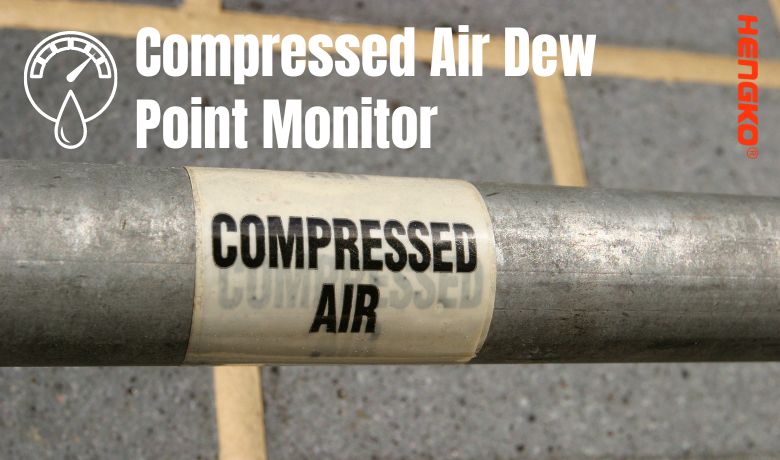1. Introduction
What is Dew Point in Compressed Air Systems?
The dew point is the temperature at which moisture in the air starts to condense into water.
In compressed air systems, this indicates when water vapor can turn into liquid due to compression, affecting air quality.
Why Monitoring Dew Point is Crucial for Compressed Air Quality
Monitoring the dew point is vital to ensure high-quality compressed air. Excess moisture can lead to issues
like corrosion and contamination, compromising equipment and product integrity in industries
that rely on clean air.
The Impact of Moisture on Compressed Air Systems and Downstream Processes
Moisture can cause several problems, including:
1.Corrosion: Rust can develop in pipes and components, shortening their lifespan.
2.Contamination: Moist air can compromise product quality in sensitive processes.
3.Equipment Damage: Moisture can harm tools and machinery, leading to costly repairs.
4.Freezing: In cold conditions, moisture can freeze, blocking airflow and damaging the system.
By monitoring dew point, operators can maintain dry air, preventing these issues and ensuring efficient operations.
2.Understanding Dew Point in Compressed Air Systems
Definition of Dew Point
Dew point is the temperature at which a given parcel of air will become saturated with water vapor.
In other words, it's the temperature at which the air can no longer hold all of the water vapor it contains.
If the temperature drops below the dew point, the excess water vapor will condense, forming liquid water or ice.
The Relationship Between Dew Point, Humidity, and Temperature
*Humidity:
The amount of water vapor in the air.
*Temperature:
The measure of the average kinetic energy of the molecules in a substance.
*Dew point:
The temperature at which the air becomes saturated with water vapor.
The relationship between these three is interconnected:
*Higher humidity:
More water vapor in the air.
*Lower temperature:
The air's ability to hold water vapor decreases.
*Constant humidity:
As temperature decreases, the air eventually reaches its dew point, and water vapor condenses.
Effects of High Dew Point on Compressed Air Systems
High dew point in compressed air systems can lead to several significant problems:
*Corrosion:
Moisture in compressed air can accelerate corrosion, especially in metal components.
This can lead to equipment failure, increased maintenance costs, and reduced system efficiency.
*Equipment Failure:
High dew point can cause components like valves, cylinders, and filters to
malfunction or fail prematurely. This can result in downtime, production losses, and safety hazards.
*Product Quality Issues:
Moisture in compressed air can contaminate products, leading to defects, product recalls, and
damage to brand reputation. This is particularly critical in industries such as food processing,
pharmaceuticals, and electronics.
To mitigate the negative effects of high dew point in compressed air systems, it's essential to
implement effective air drying solutions, such as desiccant dryers or refrigerated dryers.
These systems can reduce the dew point of compressed air to a level suitable for specific
applications, ensuring optimal system performance and product quality.
3.Why You Need a Dew Point Monitor in Compressed Air Systems
A dew point monitor is a critical component in compressed air systems for several reasons:
Protecting Equipment and Maintaining Efficiency
*Early Detection of Moisture:
*Preventive Maintenance:
Ensuring Product Quality in Industries Like Food, Pharmaceuticals, and Electronics
*Contamination Prevention:
Compliance with Industry Standards and Regulations
ISO 8573-1:
In summary, a dew point monitor is essential for protecting equipment, maintaining efficiency, ensuring
product quality, and complying with industry standards in compressed air systems.
By investing in a dew point monitor, you can safeguard your system's reliability and performance,
ultimately improving your overall operations.
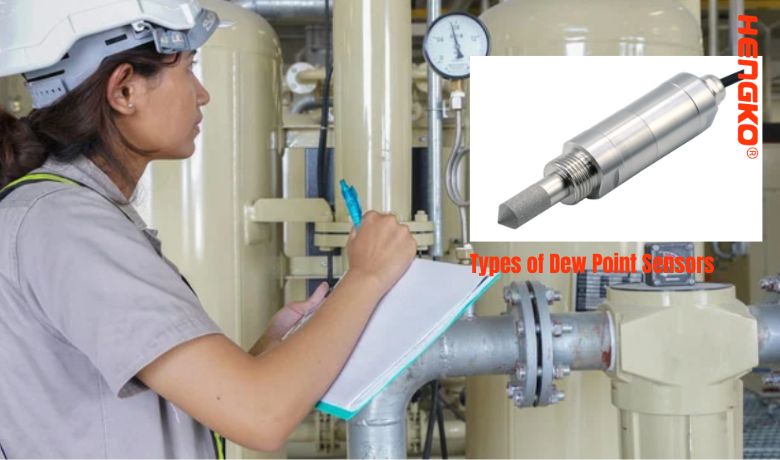
4.Types of Dew Point Sensors and Transmitters for Compressed Air
Dew point sensors and transmitters are essential tools for monitoring moisture levels in compressed air systems.
Here are some common types:
Capacitive Dew Point Sensors
How they work:
When to use them:
Resistive Dew Point Sensors
Applications:
Aluminum Oxide Dew Point Sensors
High precision for low dew points:
Comparison of Different Sensor Technologies
| Sensor Type | Accuracy | Cost | Applications |
|---|---|---|---|
| Capacitive | Moderate to high | Moderate | General-purpose dew point monitoring, pharmaceutical, semiconductor |
| Resistive | Low to moderate | Low | Portable dew point meters, basic monitoring |
| Aluminum Oxide | High | High | Pharmaceutical, semiconductor, critical applications |
So, The choice of sensor technology depends on factors such as required accuracy, cost, and specific application needs.
For example, if high precision and low dew point measurement are critical, an aluminum oxide sensor may be the best option.
However, if a lower cost and simpler solution are sufficient, a resistive sensor might be more appropriate.
It's also important to consider the overall dew point monitoring system, including transmitters, controllers, and data logging capabilities.
A well-designed system can provide valuable insights into compressed air quality and help optimize system performance.
5.Key Features to Look for in a Compressed Air Dew Point Monitor
A high-quality dew point monitor is essential for maintaining optimal performance and efficiency in
compressed air systems. Here are some key features to consider when selecting a monitor:
Accuracy and Range of Measurement
Accuracy:
The monitor should provide accurate dew point measurements within the specified range.
This is crucial for ensuring that your compressed air system meets the required quality standards.
Low Dew Point Measurement:
If your application requires low dew points, the monitor should be capable of accurately measuring
and displaying dew points below the ambient temperature.
Response Time
Quick Detection:
A fast response time is essential for detecting changes in dew point quickly.
This allows you to take corrective actions promptly, preventing equipment damage
and product contamination.
Display Options
Real-Time Monitoring:
The monitor should provide real-time dew point readings, allowing you to continuously track moisture levels in your compressed air system.
Alerts:
Customizable alerts can be set to notify you when dew point levels exceed specified limits.
This helps ensure that potential problems are addressed promptly.
Calibration and Maintenance Needs
Calibration:
Regular calibration is essential for maintaining the accuracy of a dew point monitor.
Look for monitors that are easy to calibrate and have a long calibration interval.
Maintenance:
Consider the maintenance requirements of the monitor, such as filter replacement or sensor cleaning.
Choose a monitor with minimal maintenance needs to reduce downtime and operating costs.
Integration with Industrial Control Systems
Connectivity:
The monitor should be compatible with your existing industrial control systems.
Look for connectivity options such as 4-20 mA analog output or RS485 digital communication.
This allows for seamless integration and data logging.
By selecting a dew point monitor with these key features, you can ensure that your compressed air system
operates efficiently, reliably, and in compliance with industry standards.
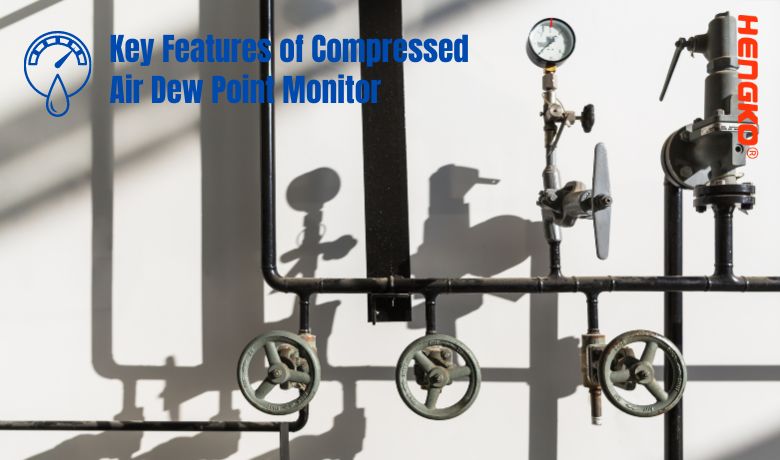
6.Best Practices for Installing Dew Point Monitors in Compressed Air Systems
Placement of Sensors
Near the Compressor:
Installing a dew point monitor near the compressor can help identify moisture introduced into the system at the source.
This allows for early detection and correction of any issues.
Downstream Points:
Monitoring dew point at various points downstream from the compressor can help track moisture levels throughout
the system and identify areas where moisture may be accumulating.
Critical Applications:
For applications requiring stringent moisture control, such as pharmaceutical or semiconductor manufacturing,
dew point monitors should be installed directly before the point of use.
This ensures that the compressed air delivered to critical processes meets the required quality standards.
Regular Maintenance and Calibration
Calibration:
Dew point monitors should be calibrated regularly to ensure accurate measurements.
The frequency of calibration depends on the specific monitor and application,
but it is generally recommended to calibrate at least annually.
Maintenance:
Follow the manufacturer's guidelines for maintenance, including cleaning, filter replacement,
and sensor inspection. Proper maintenance helps maintain the monitor's performance and prolong its lifespan.
Environmental Considerations
*Oil and Dust:
Oil and dust can contaminate dew point sensors and affect their accuracy.
Install the monitor in a location where it is protected from these contaminants.
*Temperature and Humidity:
Extreme temperatures and humidity can also impact sensor performance.
Choose a location where the monitor is protected from these environmental factors.
*Vibration:
Vibration can cause damage to dew point sensors.
Avoid installing the monitor in areas with high levels of vibration.
By following these best practices, you can ensure that your dew point monitors are installed correctly,
maintained properly, and providing accurate measurements.
This will help you optimize your compressed air system's performance, reduce downtime,
and improve product quality.
7.Common Problems and Troubleshooting Tips for Dew Point Monitors
Sensor Contamination
*Causes: Contaminants like oil, dust, or water droplets can accumulate on the sensor surface, affecting its accuracy.
*Cleaning and Maintenance:
Follow the manufacturer's guidelines for cleaning and maintenance.
This may involve using specialized cleaning solutions or compressed air.
Regular cleaning and maintenance can help prevent sensor contamination and ensure accurate measurements.
Calibration Drift
*Causes: Over time, dew point sensors can experience calibration drift, leading to inaccurate measurements.
*When and How to Recalibrate:
Recalibrate the sensor according to the manufacturer's recommended schedule.
Use a traceable calibration standard to ensure accuracy.
False Readings
Causes:
False readings can be caused by factors such as sensor contamination, calibration drift, electrical interference,
or faulty transmitters.
Troubleshooting:
*Check for sensor contamination and clean it as needed.
*Recalibrate the sensor if necessary.
*Inspect the electrical connections for any loose or damaged wires.
*Use a multimeter to check for voltage fluctuations or other electrical issues.
Detecting Faulty Transmitters
Symptoms:
Faulty transmitters can cause inaccurate readings, intermittent data transmission, or complete failure.
Troubleshooting:
*Check for power supply issues or loose connections.
*Use a diagnostic tool to test the transmitter's functionality.
*If necessary, replace the faulty transmitter.
By addressing these common problems and following proper troubleshooting procedures, you can maintain
the accuracy and reliability of your dew point monitors, ensuring optimal performance of your compressed air system.
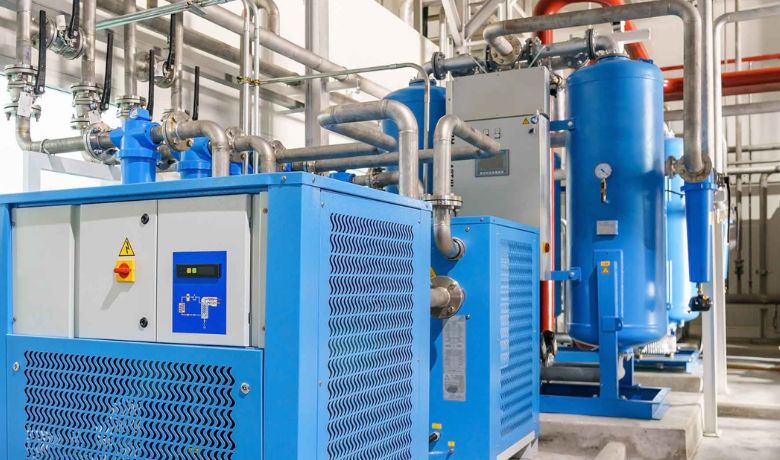
8.How to Choose the Right Dew Point Monitor for Your Application
When selecting a dew point monitor, several factors should be considered:
Industry
*Specific Requirements:
Different industries have varying requirements for compressed air quality.
For example, the pharmaceutical and food industries often have strict regulations
regarding moisture content.
*Dew Point Range:
The required dew point range will depend on the specific application within your industry.
Dew Point Range
*Low Dew Points:
Applications such as semiconductor manufacturing or cleanrooms may require extremely low dew points.
*High Dew Points:
Some industries, like general-purpose compressed air systems, may only need moderate dew point levels.
Accuracy
*Required Precision:
The level of accuracy needed will depend on the criticality of the application. For example, high-precision
applications like pharmaceutical manufacturing may require a monitor with a higher accuracy rating.
Budget
*Cost Considerations:
Dew point monitors vary in price depending on features, accuracy, and brand.
Consider your budget and prioritize the most important features for your application.
High-Temperature vs. Low-Temperature Applications
*Temperature Range:
Some dew point monitors are designed for high-temperature environments, while others are more suitable
for low-temperature applications. Ensure the monitor is compatible with the operating temperature of your
compressed air system.
Portable vs. Fixed Dew Point Monitors
*Portability:
Portable dew point monitors are ideal for temporary or occasional monitoring.
Fixed monitors are more suitable for continuous monitoring in industrial settings.
Example Scenarios
*Small Workshop:
A small workshop may require a portable dew point monitor with a moderate accuracy rating for occasional checks.
*Large Industrial System:
A large industrial system may benefit from a fixed, high-accuracy dew point monitor that can be
integrated into the overall control system.
By carefully considering these factors, you can select the most appropriate dew point monitor for your
specific application, ensuring optimal compressed air quality and system performance.
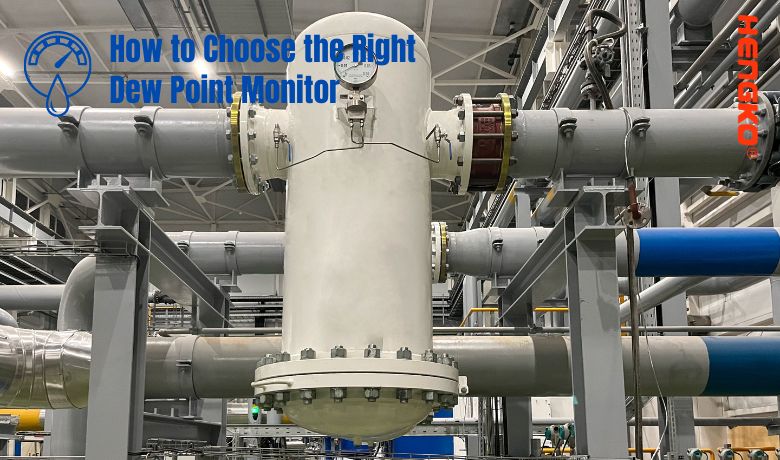
9.Top 5 Dew Point Monitors for Compressed Air Systems in 2024
Note:
While I cannot provide real-time information on the "top 5" dew point monitors for 2024, I can offer a
general overview of leading manufacturers and their key features.
Please consult recent industry reviews or consult with a compressed air equipment supplier for
the most up-to-date recommendations.
Here are some well-regarded manufacturers of dew point monitors:
1.Omega Engineering:
Known for their wide range of measurement instruments, Omega offers a variety of dew point monitors
for various applications, from portable handheld units to industrial transmitters.
2.Beckman Coulter:
A leading provider of scientific instruments, Beckman Coulter offers high-precision dew point monitors
suitable for critical applications such as pharmaceutical and semiconductor manufacturing.
3.Testo:
Testo is a global supplier of measurement technology, offering a range of dew point meters and
transmitters for various industries.
4.Extech Instruments:
Extech provides affordable dew point meters and transmitters for a variety of applications,
including HVAC, industrial, and laboratory use.
5.HENGKO:
HENGKO, We are a Chinese manufacturer specializing in gas sensors and dew point transmitters.
we can offer a range of products for various industries, including compressed air, food processing,
and environmental monitoring.
Key Specs and Features to Consider:
*Accuracy: The ability to measure dew point accurately within a specified range.
*Range: The minimum and maximum dew point values that the monitor can measure.
*Response Time: The speed at which the monitor can detect changes in dew point.
*Display: The type of display (LCD, digital, analog) and its readability.
*Connectivity: The ability to connect to other devices or systems (e.g., PLC, data logger).
*Durability: The monitor's resistance to environmental factors such as temperature, humidity, and vibration.
When selecting a dew point monitor, it's important to consider your specific needs and budget.
Research different models, compare features, and read customer reviews to find the best option for your application.
10. Conclusion:
Monitoring dew point is essential for maintaining the quality and efficiency of compressed air systems.
By keeping moisture levels in check, businesses can prevent corrosion, contamination, and equipment damage,
ensuring smooth operations and high product quality.
For tailored solutions and expert advice, don't hesitate to reach out.
Get in touch to learn more about choosing the right dew point monitor for your compressed air system.
Contact us at ka@hengko.com for dew point sensor and transmitter solutions.
Send your message to us:
Post time: Sep-24-2024
